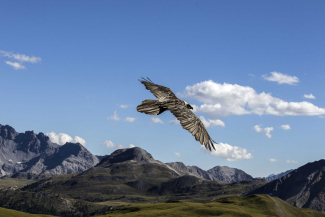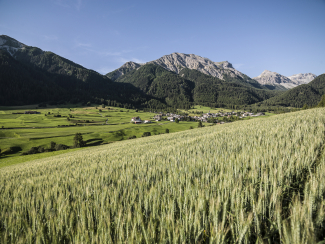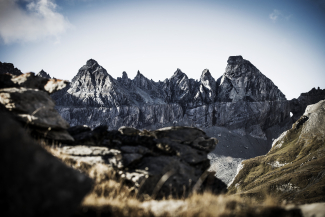Parks in Graubünden.
Categories and Overview

Situation in Graubünden
In addition to the Swiss National Park, there are four other parks in Canton Graubünden, the Biosfera Val Müstair, the Beverin Nature Park, Parc Ela and Parco Val Calanca. The canton of Graubünden also has a share in the UNESCO World Heritage Site Tectonic Arena Sardona (cross-cantonal GR/SG/GL). The Swiss National Park, the Regional Nature Park Biosfera Val Müstair and parts of the municipality of Scuol also form the UNESCO Biosphere Reserve Engiadina Val Müstair.
The Swiss National Park
The Swiss National Park (SNP) was founded in 1914 in Engadin and Val Müstair as the first national park in central Europe. It is a wilderness area with a core zone of 170 km², in which all living creatures and natural processes are strictly protected. The intent and purpose of the SNP is regulated by a separate Federal Act. In addition to nature conservation, scientific research and public awareness are among the core objectives.

Regional Nature Parks
The perimeters of the Regional Nature Parks are located in rural, partly populated areas. Regional nature parks are committed to the preservation and enhancement of existing natural and cultural values and strive for sustainable regional development. A Regional Nature Park builds on existing legal foundations and thus does not result in new regulations, laws or zoning for the region. In the Canton of Grisons there are the Regional Nature Parks Parc Ela, Nature Park Beverin Biosfera Val Müstair and Parco Val Calanca.
UNESCO Biosphere Reserve
A Regional Nature Park is recognised as a UNESCO Biosphere Reserve if additional criteria are met. These include zoning into a core, maintenance and development zone, the biogeographic representativeness of the region and the implementation of research projects. They fulfil a protective function to preserve genetic resources, animal and plant species, ecosystems and landscapes; promote sustainable development; and have a focus on research and education for sustainable development. The Regional Nature Park Biosfera Val Müstair, the Swiss National Park and parts of the municipality of Scuol form the UNESCO Biosphere Reserve Engiadina Val Müstair.

UNESCO World Heritage Site
In addition to the various parks and UNESCO biosphere reserves, there are UNESCO World Heritage Sites. UNESCO aims to preserve cultural and natural assets of outstanding universal value. Natural assets include, for example, ecosystems, evidence of the history of evolution, natural paradises or reserves of animals and plants threatened with extinction. In addition to the UNESCO World Natural Heritage Sites of the Jungfrau Aletsch and Monte San Giorgio, the Sardona Tectonic Arena, which covers an area of the canton of Graubünden, is one of Switzerland's World Natural Heritage Sites.
